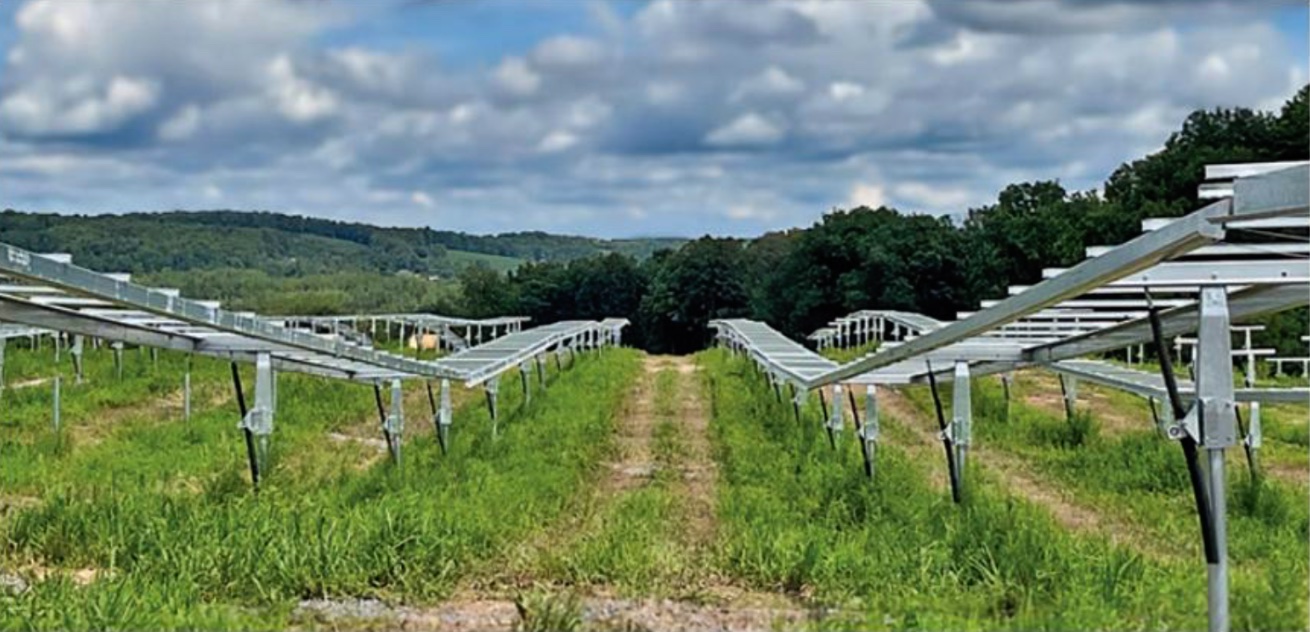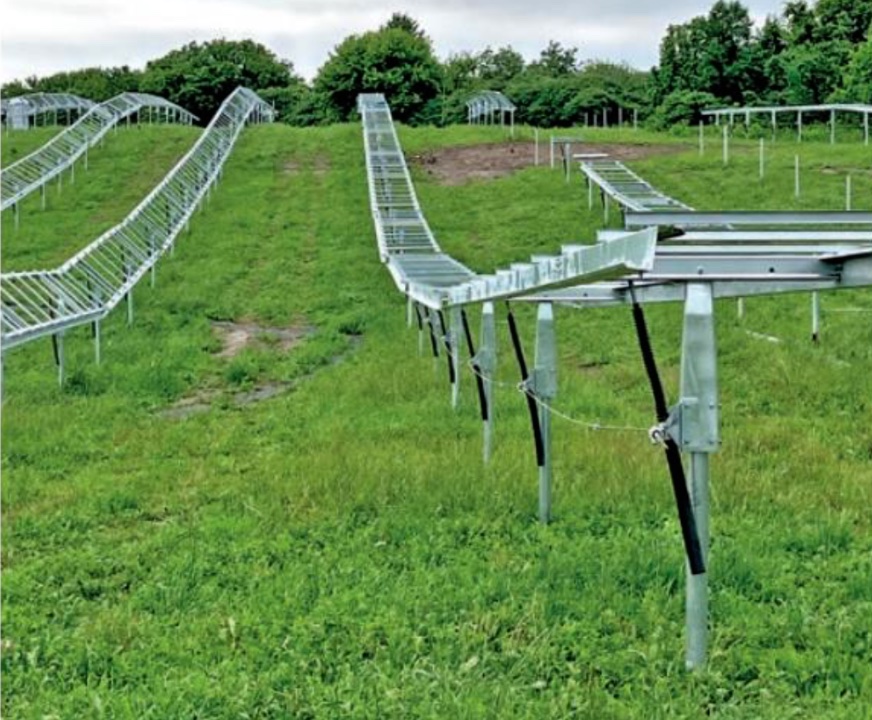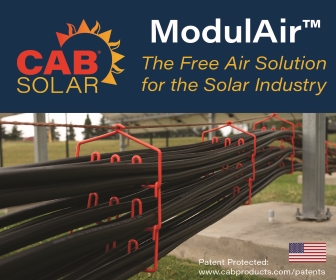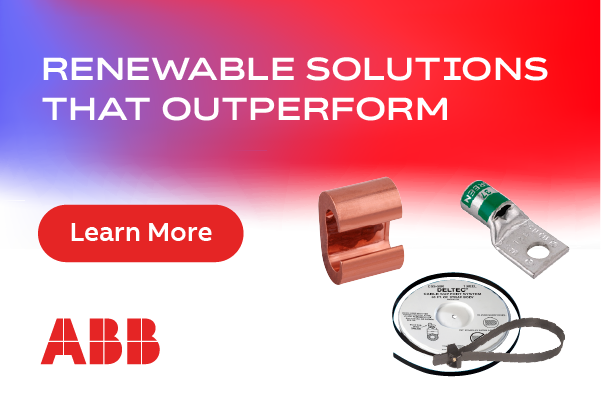Trackers Tackle Tough Terrain: How the mounting system manufacturers are taking on the challenge of building on variable topography and rocky conditions.
Gone are the days when single axis tracker solutions (SAT) are only used on large, open fields on soft ground. Today, you will find them all over the world, including northern cold climates and islands with heavy winds, which until very recently were not considered suitable tracker sites.
As the need increases to install solar on more challenging and variable terrain, SAT solar mounting systems suppliers have become more innovative with their solutions so they can be installed on sites that were previously unviable and maximize the energy yield.
However, not every tracker is suitable for highly variable terrain and robust enough to withstand the additional wind loading and other environmental stresses.
In this article, we will explore the design considerations for single axis trackers on variable terrain and challenging soil conditions that can impact the cost of the site and whether it may make financial sense to select a fixed tilt mounting solution.

Design Considerations for Heavy Wind Conditions
Wind loads can have a major impact on the electricity generated from a solar plant. This is specifically due to the wind stow mode designed to protect the solar racking and panels from damage caused by wind loading. Most single axis trackers have their wind stow mode set to an angle between 40 and 60 degrees. Depending on where the sun is positioned in the horizon, wind stow mode may significantly reduce the electricity generated during high winds. The drop can be especially dramatic when the sun shines on the opposite side from where the modules are facing during stow position.
To understand wind stow mode and why the priority is not maximizing electricity generation during high winds, you need to understand the impact of tortional galloping. In tracker designs with torque tubes, the flat position, ideal for electricity generation during high wind, subjects the torque tubes to loads that cause them to turn into a big spring, a phenomenon known as tortional galloping. Those loads can have catastrophic results to the entire structure and in the end be more costly than lost electricity generation. Yet, lost electricity generation from wind stow mode will consistently be at play with the torque tube tracker design.
Tracker manufacturers, with designs suited to windier locations, do not use torque tubes but rather purlins similar to those found in fixed tilt racking designs. These allow for flat position (0-degree tilt) during wind stow mode, which results in significantly greater solar energy production, even in the windiest conditions.
 Why Grading is No Longer the Solution for Undulating Terrains
Why Grading is No Longer the Solution for Undulating Terrains
Increasingly, many land authorities are requiring that solar sites have zero grading on site to maintain the integrity of the soil and the environment to minimize the impact of solar installations on the surrounding habitat. This leaves developers with a choice between using a fixed tilt ground mounting solution, not developing the land, or selecting a tracker design that can be installed on undulating terrain. The first two scenarios result in less or unrealized revenue. The third scenario has several perfectly good options on the market if you understand how tracker design works.
Many tracker manufacturers are releasing new iterations of their product that accommodate greater slopes. Trackers with a table design rather than the torque tube design offer large slope tolerances when it comes to moving up and down slopes on sites. The table design adds greater flexibility between the tables giving more allowance to follow the natural lay of the land and keep the original condition of the grounds.
In contrast to the table design, designs using torque tubes require the ground under a single row to be flat for the length of the torque tube. Even on a 5 MWAC or smaller community solar site, the torque tube design will require extensive civil works amounting to tens of acres of grading. When that grading is scaled up to a larger 20+ MW site, the cost and the impact on the environment increases accordingly, and financial viability of the project decreases.
Aside from the cost of the project and its environmental impact, grading adds significant time to construction. In the short construction window found in the northern U.S. and Canada, the difference may be an additional year before a solar project reaches operational status.
In short, selecting a tracker with table design instead of torque tube allows developers to use more of each site to produce power, reducing development timeline and cost while keeping land authorities and neighbors much happier.
Hard frost susceptible grounds
We are seeing a huge increase in the number of sites on either hard ground and/or highly frost-susceptible soils. The recommended foundation types in these areas are often helical piles, ground screws, or round driven posts. Yet, the vast majority of tracker solutions on the market today are designed to accommodate C-channels or I beam foundations, which do not perform well in frost conditions.
Currently, what we see in these situations is the use of third-party adapters, which can double the number of piles required on these types of sites. This greatly increases the risk of refusals or of not meeting the design requirements. It also increases the cost of foundation installation. Moreover, since many of these adapters are designed by third parties, it greatly increases the complexity of figuring out the accountable party if there is a failure on site sometime in the future.
When building in these conditions, it is important to select a solution that is compatible with foundations recommended for the site conditions rather than a workaround, such as a foundation adaptor, which is often a hidden cost during the quoting process and increases complexity. As any engineer will tell you, designing solar foundations for the site conditions rather than forcing the product to work with the site will mitigate costs, install risk, and reduce long-term O&M costs.

Case Study: State Route 5
In 2023, Polar Racking was selected to design and supply its single-axis tracker, AXSUS Sol-X, to State Route 5, a 5.93 MWAC community solar project located in Oneida County, New York. The project’s location and the site conditions presented several challenges, including undulating terrain and cold weather stress from frost upheave and frost loads.
The topography and subsurface conditions on the State Route 5 project site posed many difficulties in developing the design: the uneven terrain had significant slopes, which Polar Racking had to consider when installing the panels so that they were at the optimal angle to capture the most sunlight and optimize energy output. The subsurface conditions, such as soil type and drainage, also impacted the tracker foundation stability over time.
The use of the AXSUS solar tracker proved to be essential to the success of the project because of the way the AXSUS directly addressed the challenges presented with the undulating terrain. The terrain-following feature of the AXSUS allowed for the solar panels to adjust to the topography of the site, ensuring that they remained at the optimal angle throughout the day to capture sunlight and maximize energy output. Additionally, the high tolerances, loading capacity, and constructability of the AXSUS Sol-X made it well-suited for the site’s challenging subsurface conditions, ensuring the stability and longevity of the State Route 5 solar project. Furthermore, weather-related challenges during construction were mitigated through off-site pre-assembly of the major tracker components, which is a unique feature of this type of SAT solution.
Bottom Line
In conclusion, designing solar installations on variable topography presents unique challenges that require careful consideration and planning. Certain single-axis solar trackers solutions can effectively overcome the undulating terrain while avoid grading costs. However, it is critical to carefully evaluate the site and choose the appropriate tracker, foundation design, and array layout that are tailored to the specific conditions of the site. It is essential to consider factors such as wind loads, frost risks, and soil conditions to ensure the safety and longevity of the solar installation.
With these design considerations in mind, implementing single-axis solar trackers for solar infrastructure on variable topography can generate sustainable energy production and contribute to a cleaner and greener future.
Author is Vishal Lala, Managing Partner, at Polar Racking, which designs, engineers, and manufactures PV mounting systems. The company has a diversified portfolio of ground-mount, rooftop, and carport products for commercial, and utility-scale markets.
Polar Racking | www.polarracking.com
Author: Vishal Lala
Volume: 2023 September/October









.png?r=8876)


